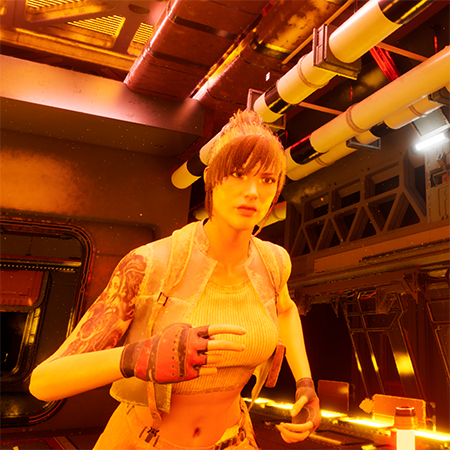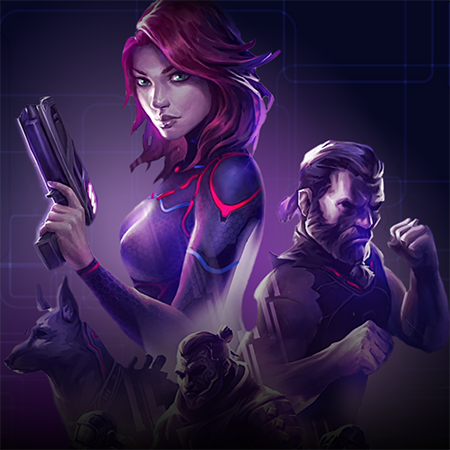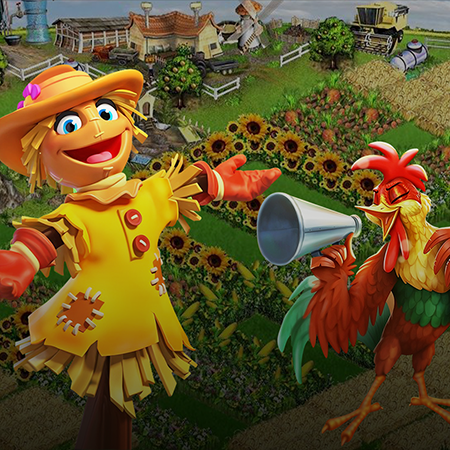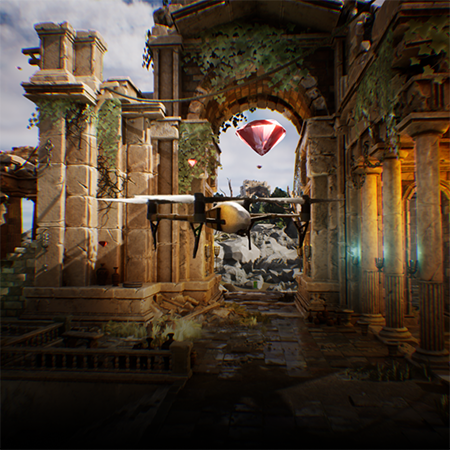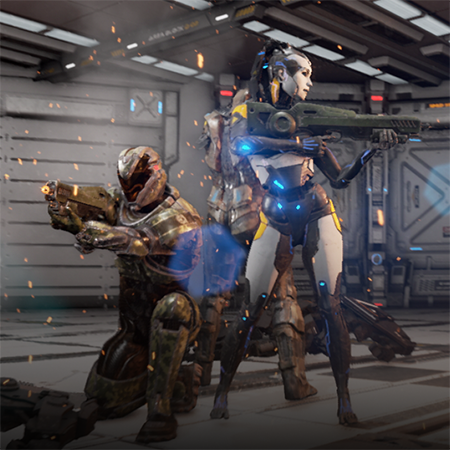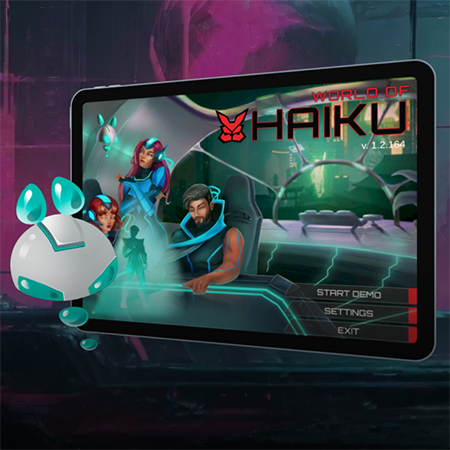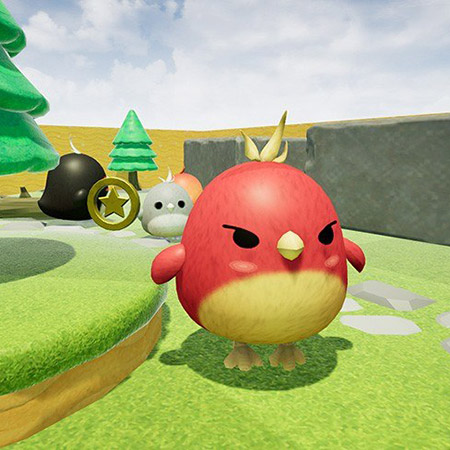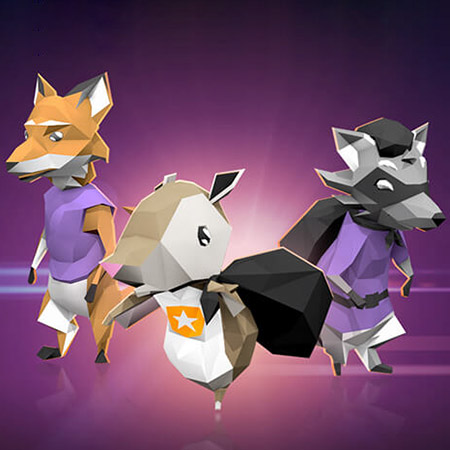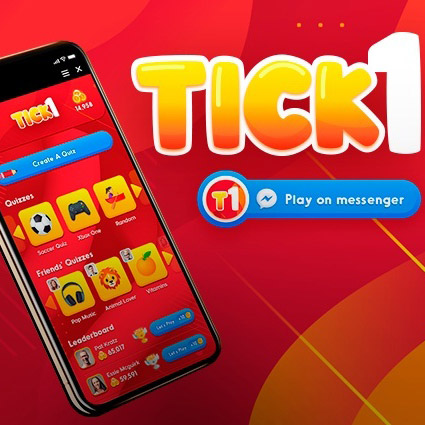AI game assistants have become a practical tool in full-cycle game development. They support developers at every stage, from early design to live operations. Their roles go beyond simple NPC scripting. AI assistants help organize quests, adjust difficulty based on player behavior, and support dynamic interactions that respond to user actions in real time.
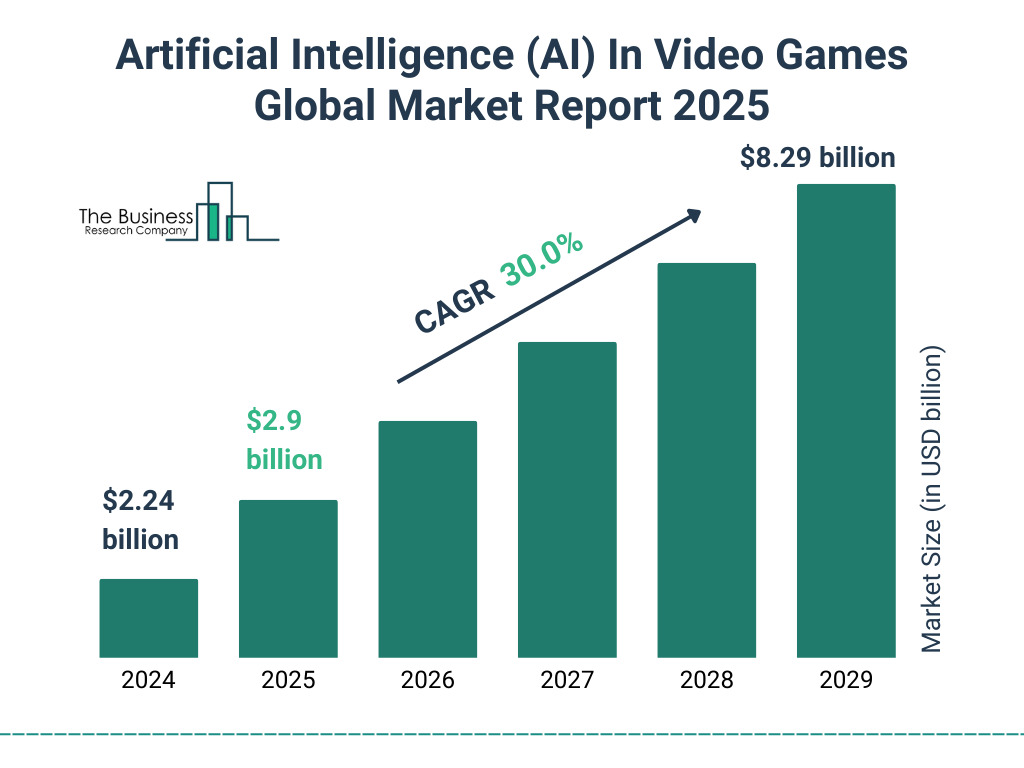
Many studios now include AI assistants in their standard development workflow. Full-cycle game development teams use them to test game logic, manage in-game economy systems, and optimize user engagement without relying entirely on manual updates. AI tools can handle repetitive testing routines, allowing designers and programmers time to focus on critical game features.
Unlike fixed behavior scripts, AI game assistants analyze ongoing gameplay data to adapt their responses and strategies in real time. A similar approach is used in AI avatars in casino, where adaptive algorithms adjust avatar behavior according to player patterns. They can adjust responses, generate content variations, and even manage localization across multiple regions. Full-cycle game development benefits from this adaptability, especially in large-scale multiplayer games or games that evolve post-launch.
AI assistants are no longer experimental tools. They serve defined, measurable roles that directly support production pipelines and improve game quality across platforms and genres.
Why AI Game Assistants Are Changing Player Expectations
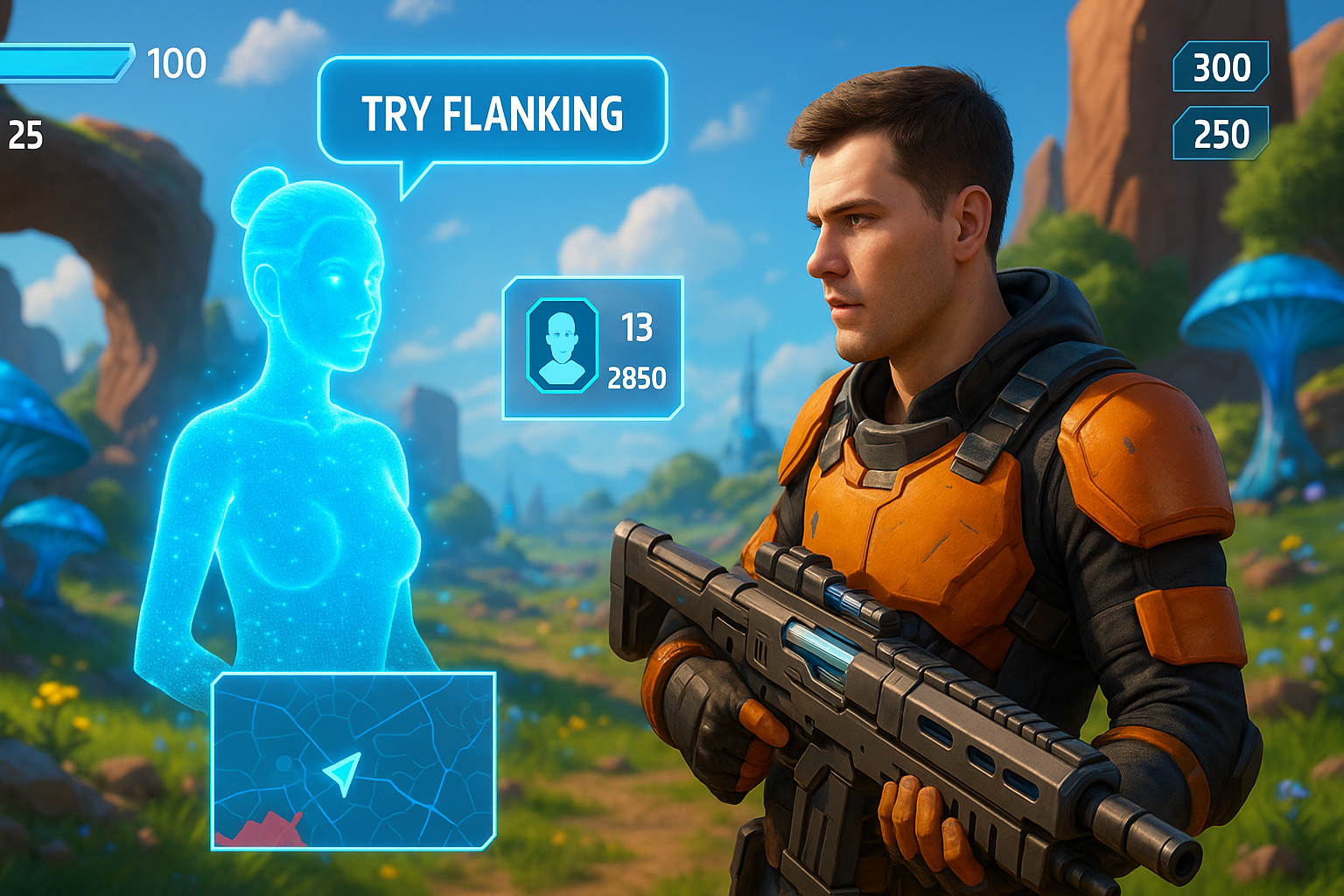
AI game assistants have redefined how players interact with digital environments. You no longer need to rely on static dialogue or predictable behaviors. AI-driven characters can recognize player patterns, respond with context-specific dialogue, and shift game objectives in real time.
That change increases replay value and keeps players engaged longer. In full-cycle game development, teams now use AI to adjust content based on player behavior across multiple sessions. You also get more reliable data for balancing gameplay. When you introduce an AI assistant early in game prototyping, you gain a clear view of how players act and react before final systems are in place.
Evolution from Scripted NPCs to AI-Driven Interaction
In traditional design, NPCs followed fixed behavior trees. They repeated the same lines and ignored most player actions. You had to code dozens of triggers manually. Today, AI game assistants learn from player choices and adapt. You can build a single character that evolves across multiple playthroughs. During game prototyping, this helps you test dialogue branches, behavior logic, and player retention early on without needing fully developed systems.
Studios like Ubisoft use AI assistants to track how often players talk to specific characters and when they lose interest. That data reshapes how missions unfold or how characters behave during story events. AI can now track tone, word choice, and even decision frequency. You get smarter feedback and better pacing without redesigning entire levels. Scripted behavior will still play a role, but you should expect hybrid AI characters to become a standard in many genres.
The New Standard for Immersive Gameplay
You can no longer rely on static cutscenes to keep players immersed. Games like Red Dead Redemption 2 and Cyberpunk 2077 now include NPCs that remember player actions or respond differently across missions. AI game assistants make this possible on a broader scale, not just in AAA titles. They let your game environment feel responsive and personal, even with limited resources.
When learning how to make a game demo, include an AI-driven character that reacts differently depending on the player’s path or timing. You show potential publishers or testers what kind of depth your full game could reach. That dynamic interaction becomes a key part of how you pitch your project. You don’t need large teams or expensive systems — tools like Inworld, Charisma, and Convai offer AI NPC logic even during early builds. Immersive gameplay now starts with smarter interactions, not larger budgets.
What Is an AI Virtual Assistant in Gaming?
An AI virtual assistant in gaming is a system that performs tasks, delivers the information, or supports in-game functions through natural interaction. It often uses speech recognition, behavior prediction, and context analysis to engage with players or assist developers. Unlike traditional NPCs that run on fixed paths or simple trigger systems, AI virtual assistants adjust their responses in real time based on what's happening in the game.
You can use them in many ways. For example, some games include AI guides that help players explore mechanics or complete missions without pausing or reading menus. Others use AI assistants as part of the narrative structure. In Starfield, your ship's AI helps with decision-making and interacts dynamically depending on past choices. That increases immersion without overwhelming players with tutorials.
Developers also rely on behind-the-scenes AI virtual assistants. You can build quest logic, test difficulty curves, or identify player friction points faster. The assistant doesn't just respond to players. It helps you shape the experience based on real data.
Some tools like Rasa or Inworld integrate easily with major engines. You can script interactions using natural language inputs, then let the AI refine those based on playtests. AI assistants can handle voice and text inputs, making them flexible for mobile, console, or PC titles. Instead of thinking of them as NPCs with more lines, treat them as co-creators. They manage game logic, support users, and help you scale content without manually writing every possible outcome.
How AI NPCs and Assistants Improve Game Dynamics
AI NPCs and assistants change how players interact with game systems. They allow for more responsive, personalized, and strategic experiences without adding manual complexity. Instead of pre-set actions, players now engage with characters and mechanics that shift based on behavior and timing. You don’t have to design every outcome. AI handles branching, pacing, and difficulty balancing automatically. That flexibility speeds up rapid game development and helps you focus on core gameplay instead of scripting minor events.
Personalized Quest Systems and Adaptive Dialogue
Quests no longer need to follow a fixed path. AI lets you create goals that shift depending on player choices, item usage, or exploration patterns. That means players receive objectives based on how they actually play, not how you expect them to.
Benefits of AI-driven quest systems:
- Smarter branching. Quests change based on past behavior, not just dialogue choices.
- Real replay value. Players can see different outcomes without playing an entirely new game.
- Natural responses. Dialogue flows based on tone, timing, or even pauses in interaction.
For example, games like Middle-earth: Shadow of Mordor laid the groundwork, but AI now takes those ideas further. Instead of manually defining every possible outcome, you can use tools that let dialogue and quest logic respond in real time. That keeps players engaged longer and gives you more control over how content adapts without inflating your workload.
Real-Time Strategy Support and Companion Mechanics
AI assistants help players manage fast-paced environments without relying on menus or complex macros. Companion systems become smarter, more aware of player tactics, and capable of meaningful input.
Examples of how AI enhances support systems:
- Tactical coordination. AI teammates reposition automatically based on terrain or enemy movement.
- Role adaptation. Companions adjust focus between offense and defense based on player behavior.
- Loadout adjustments. Assistants recommend equipment changes based on match conditions.
In strategy games or action RPGs, these systems reduce micro-management. Instead of pausing the game to issue commands, players can rely on companions to respond intelligently. You save time during prototyping and testing since AI-controlled characters handle edge cases that would otherwise require manual fixes or extra scripting.
Dynamic Tutorials and Onboarding with AI Assistants
Tutorials often frustrate players or break immersion. AI assistants solve this by adjusting guidance based on actual user behavior. You no longer need to design a single tutorial for everyone.
How AI improves onboarding:
- Context awareness. Assistants detect when players struggle and offer help only when needed.
- Paced instruction. Explanations come step by step, not all at once.
- Natural language. Players can ask questions using voice or text instead of digging through menus.
In rapid game development, that flexibility means you don’t waste time writing detailed walkthroughs. The AI assistant provides real-time support, lets players learn by doing, and reduces friction during early gameplay. You improve retention and skip the need for static tutorials that most users ignore after a few minutes.
AI Game Assistant Examples Already in Use
AI game assistants are already part of many successful titles. Studios use them to control NPC behavior, manage live interactions, and support players in real time. You’ll find them in both narrative-heavy RPGs and fast-paced online games. They help simplify complex systems without reducing gameplay depth. AI assistants also play a major role in development, allowing teams to simulate player behavior before launch. That makes testing faster and content delivery more scalable.
Open-World Titles with Contextual AI NPCs
Games like Red Dead Redemption 2, Watch Dogs: Legion, and Cyberpunk 2077 have moved beyond basic NPC routines. They feature characters that respond to what you do, where you go, and how long you stay in a location.
Essential features of contextual AI NPCs:
- Behavioral memory. NPCs change how they speak or act depending on your past decisions.
- Situational awareness. Characters react to sounds, events, or the player’s appearance in real time.
- Variable responses. Dialogue shifts based on mood, threat level, or faction relationships.
You can implement similar systems without large teams. Tools like Inworld or Charisma allow you to define context triggers and personality traits. That lets you build open-world characters that adapt without dozens of manual behavior trees.
Companion Bots in Competitive Multiplayer Games
In games like Apex Legends, Valorant, or Overwatch 2, AI bots are used to fill missing team roles or train new players. These bots aren’t static. They study match behavior and react with near-human timing.
Practical roles for companion bots:
- Filling squads. When human players leave, AI fills the gap without ruining team flow.
- Player training. Bots mimic real player tactics to help users practice without pressure.
- Match pacing. AI can speed up or slow down action to keep things balanced.
You don’t need custom engines to implement this. Many engines now include AI modules that can analyze game state and adjust strategy mid-match. You improve player satisfaction and reduce churn, especially during the early user experience stages.
AI-Powered Game Masters in Tabletop Simulations
AI tools have expanded into digital tabletop experiences, especially for games that rely on improvisation and branching narratives. Dungeon Alchemist, TaleSpire, and AI Dungeon use AI to manage rule systems, build maps, and respond to player input without needing a live game master.
What AI game masters can do:
- Auto-generate content. Maps, quests, and encounters adjust in real time.
- Enforce rules. The system tracks movement, combat, and items automatically.
- Narrate outcomes. Based on user input, the AI offers consistent story feedback.
You can also build custom campaigns without writing every detail. AI generates filler content, adjusts pacing, and handles random events. That’s useful if you are building a tabletop-like game where flexibility and replayability matter. You spend less time managing mechanics and more time shaping the actual experience.
Technical Foundations of AI NPC Integration
AI NPC integration depends on systems that handle input, decision-making, and output in real time. You need tools that recognize user actions, interpret context, and trigger dynamic responses. That includes natural language processing, behavior modeling, and often server-side logic. Game engines like Unreal and Unity support plug-ins and APIs that simplify these tasks. You can connect third-party AI services directly to your existing systems. That helps reduce complexity while keeping the experience fluid for players.
Natural Language Processing and Intent Recognition
Natural language processing (NLP) lets NPCs understand player input, whether typed or spoken. Instead of relying on keyword matching, modern NLP tools identify intent and context. You don’t need to script every possible phrase. The system maps input to core commands or topics, making conversations natural and responsive.
You can implement tools like Rasa, Dialogflow, or Inworld into your game. These tools support intent classification, entity extraction, and dialogue flow control. For example, when a player says, “I need a weapon,” the AI doesn’t just look for the word “weapon.” It recognizes the intent to access an inventory or shop.
You improve both accuracy and speed by using pre-trained models and fine-tuning them with in-game examples. You also reduce development time during prototyping. Even a simple AI assistant using NLP can handle complex support roles inside your game world without needing full-character scripting.
Behavior Trees vs. Machine Learning Agents
| Feature | Behavior Trees | Machine Learning Agents |
| Control method | Rule-based logic flow. | Data-driven behavior training. |
| Setup complexity | Simple to set up with clear structure. | Requires training data and tuning. |
| Flexibility | Limited to predefined rules. | Adapts to new patterns over time. |
| Predictability | Fully predictable outcomes. | Varies based on training and feedback. |
| Debugging | Easy to track node flow. | Harder to trace due to opaque decision process. |
| Performance cost | Low resource usage. | Higher GPU/CPU load depending on model size. |
| Use case | Ideal for enemy patrols, basic reactions. | Best for evolving companions, complex opponents. |
| Tool support | Built into most engines (e.g., Unreal, Unity). | Often needs third-party libraries. |
You can combine both approaches depending on the use case. Use behavior trees for static or safety-critical systems. Use machine learning agents when you need real-time learning or highly adaptive characters.
Server-Side Logic and Performance Impacts
Running AI logic on the server side gives you more control and consistency, especially in multiplayer environments. You avoid many client-side issues, such as cheating or desync, but server-based AI also adds its own technical load. Before adding complex logic to your server, evaluate how it affects performance, cost, and real-time responsiveness.
- Increased load balancing needs. AI that runs on the server adds computational demand and may require dynamic load management.
- Higher latency risks. Processing AI logic remotely may introduce slight delays in high-action games, especially over unstable networks.
- Scalable behavior updates. Server-side control lets you update or patch AI behaviors without needing client updates.
- Easier cheat prevention. Keeping AI logic on the server reduces the risk of local manipulation or exploits.
- Data synchronization challenges. You must ensure a consistent AI state across all clients, especially in multiplayer sessions.
- Monitoring and logging capacity. More AI logic requires better logging tools to track behavior and debug issues across sessions.
- Infrastructure costs. Cloud-based AI services or dedicated server logic increase backend expenses, especially at scale.
When deciding where to run AI processes, consider how often the assistant needs to respond, how much data it pulls in, and how often it updates. For games that rely on shared environments or competitive balance, server-side logic offers clear technical benefits but requires careful planning to avoid performance bottlenecks.
Monetization and Retention: Business Gains from AI Assistants
AI assistants directly support business goals by improving player retention and reducing manual overhead. You can automate in-game support, create personalized interactions, and adapt systems that respond to individual user behavior. That keeps players active longer and increases lifetime value. AI also helps balance monetization without harming user experience. Instead of one-size-fits-all systems, you can adjust offers, content pacing, and real-time difficulty. Those gains make AI a practical investment, not just a design feature.
Keeping Players Engaged Through Personalized Support
Engagement drops fast when players feel stuck or ignored. AI assistants offer personalized help without requiring users to leave the game or search for guides. You can script assistants to respond to behavior, timing, or even frustration patterns, offering guidance at just the right moment.
Key engagement tactics with AI assistants:
- Contextual tips. Deliver support based on where the player is and what they’re doing.
- Progress nudges. Recommend quests or objectives if players wander too long.
- Friendly reminders. Suggest unused features or content when play patterns slow down.
Genshin Impact avoids player fatigue by embedding assistance into the flow of gameplay rather than opening with rigid tutorials. You interact with systems gradually, which keeps engagement steady without overwhelming new users.
In-Game Economy Optimization via Smart NPC Behaviors
You can use AI-driven NPCs to shape player spending patterns naturally. Instead of static shop inventories or fixed pricing, AI adjusts based on what players do, what items they skip, and how often they return to specific locations.
Ways AI supports game economy optimization:
- Demand-driven pricing. Prices change based on popularity and scarcity.
- Dynamic offers. NPCs suggest bundles or discounts tailored to user actions.
- Spending feedback. AI assistants recommend useful items based on player goals.
Overall, mobile games like AFK Arena and Clash Royale use similar systems to personalize offers without annoying players. You improve monetization while keeping the economy fair and balanced. AI lets you test and roll out changes without heavy code revisions or broad rebalancing.
Reducing Customer Support Costs with AI Virtual Assistants
Support teams often handle repeat questions, bug reports, or onboarding issues. AI virtual assistants can handle a large part of this load inside the game, answering in real time and freeing your team to focus on complex tickets.
How AI lowers support overhead:
- Instant responses. Players get help without needing to exit the game or send tickets.
- Common issue handling. Assistants can resolve account issues, payment errors, or login problems.
- Feedback collection. AI can gather structured user input for your team to review later.
Games with large user bases — like League of Legends — use chat-based support bots to reduce wait times. Smaller studios can also use plug-and-play solutions like Ada or Zendesk integrations. Solving problems before they escalate cuts costs and improves satisfaction.
What about making your game assistants smarter with our AI solutions?
Design Challenges When Implementing AI Game Assistants
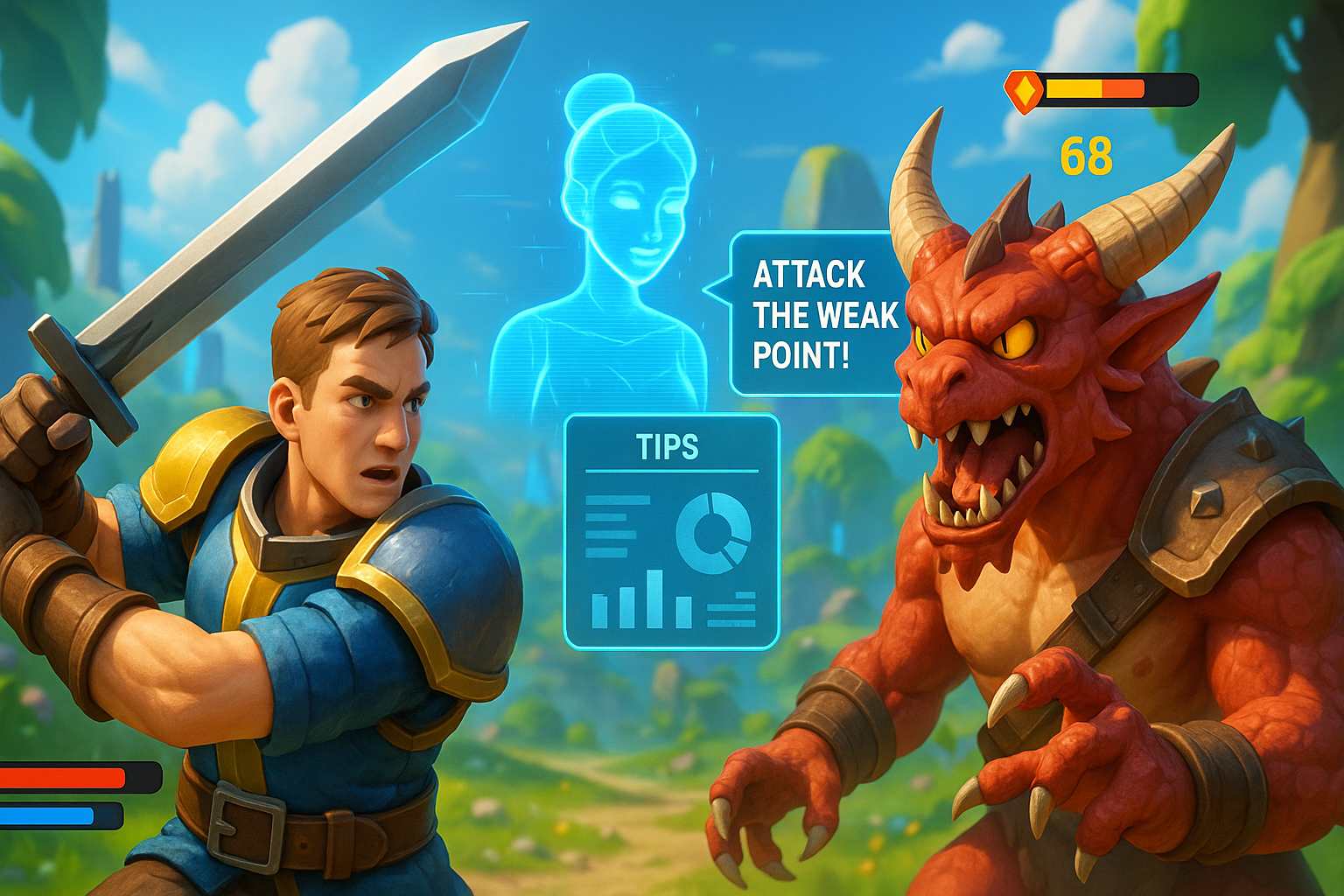
Adding AI game assistants improves gameplay and brings new design risks. You need to avoid overstepping boundaries, manage data responsibly, and ensure that the assistant feels natural, not unsettling or annoying. Poor implementation can lead to players ignoring the assistant or feeling uncomfortable. Each decision impacts trust and usability, from voice tone to behavior timing. Careful testing, clear boundaries, and ethical choices help prevent adverse reactions and maintain user engagement.
Avoiding the “Creepy” Uncanny Valley Effect
AI characters that try too hard to feel human can trigger discomfort. Players might react negatively if faces, voices, or gestures feel slightly “off.” That response, known as the uncanny valley, can hurt immersion and reduce trust.
How to prevent uncanny assistant behavior:
- Simplify expressions. Use stylized visuals or limited facial animations.
- Limit emotional mimicry. Avoid trying to replicate real human empathy too closely.
- Test voice lines carefully. Synthetic voices should be clear, neutral, and consistent.
Detroit: Become Human avoids discomfort by matching high-quality facial animation with consistent voice work. That combination makes its AI characters convincing without crossing into the unsettling.
Balancing Helpfulness vs. Overreach
AI assistants should support the player without interrupting gameplay. Players may ignore or disable if the assistant offers help too often or in the wrong context. If there is too little help, users might get stuck.
Good design practices for balance:
- Trigger by need, not time. Activate support only when the player struggles or pauses.
- Allow dismissal. Always give players the option to turn off or limit assistance.
- Avoid repetition. Don’t repeat the same advice unless the user needs it again.
Portal introduces mechanics through environmental reactions rather than tutorials. You learn by doing, not by reading or being told what to do. That model works well for keeping players active without pushing too hard.
Ethical Use of Player Data in AI Behavior
AI assistants often rely on user data to personalize interactions. That can include gameplay patterns, dialogue history, or even time spent in menus. Using that data effectively means protecting it and setting clear limits.
Ethical design considerations:
- Data minimization. Collect only what’s necessary to improve gameplay.
- User awareness. Let players know how their data affects AI behavior.
- Secure storage. Make sure any collected data is encrypted and anonymized.
Instead of forcing difficulty spikes, FIFA tracks players' performance over time and adjusts AI opponent behavior accordingly. The system keeps matches competitive without feeling scripted. In turn, Genshin Impact uses performance data to recommend event content and adjust item drop rates. Those changes happen silently in the background and reflect user habits without being disruptive.
Tools and Platforms Powering the Next Generation of AI NPCs
Modern AI NPCs depend on specialized tools that simplify logic creation, behavior modeling, and real-time communication. You don’t have to build systems from scratch. Many platforms offer ready-to-integrate SDKs supporting natural language, emotional states, and memory persistence. These tools work with popular engines like Unreal or Unity so that you can adapt them across genres and platforms. With the right setup, even small teams can create lifelike characters without deep AI expertise.
Leading AI SDKs for Game Development
Several AI SDKs are shaping how developers create intelligent NPCs. Each brings unique strengths depending on your goals—dialogue depth, memory handling, or scene integration.
Top SDKs to consider:
- Inworld. Lets you build emotionally responsive characters with persistent memory and voice support.
- Charisma. Focuses on story-driven dialogue, offering fine control over pacing and emotional arcs.
- Convai. Optimized for fast character interaction and lightweight integration with 3D environments.
- Rasa. Provides open-source NLP and intent recognition for developers who want full customization.
Each tool allows you to design NPC logic through intuitive workflows, making it easier for writers, VFX artists, and gameplay designers to contribute directly. You can rapidly iterate, test, and refine behavior without waiting on backend engineers. That shift shortens production cycles and adds more polish during early development phases.
Cross-Platform Considerations for Deployment
Deploying AI-powered NPCs across multiple platforms, such as PC, console, and mobile, requires careful planning. You have to account for system performance, voice processing limits, and internet requirements.
Some cross-platform factors to address are:
- Performance caps. Mobile and low-end devices may need simplified AI routines to maintain framerate.
- Offline fallback. Provide basic behavior when a device has no connection to cloud-based services.
- Voice compatibility. Ensure speech APIs support all target systems or include text-based alternatives.
- Data syncing. Keep memory states and user interactions consistent across multiple devices.
- Input flexibility. Match AI interaction styles (voice, text, touch) to the hardware’s strengths.
If you involve VFX artists or animators in the process, define clear limits early. Depending on platform constraints, animation systems, facial rigs, and lighting setups may need to be adjusted. Cross-platform readiness means balancing experience quality with hardware and connection realities.
Where AI in Games Is Headed
AI in games is shifting from reactive systems to active contributors. You’ll see assistants responding to players and shaping the game itself, adjusting missions, generating content, and learning from user behavior across sessions. Developers are starting to treat AI as part of the design team, not just a feature layer. Persistent characters, shared memory, and real-time adaptation are no longer experimental ideas. They are becoming practical tools in both indie and AAA development.
From Virtual Assistant to Co-Developer
AI assistants are moving into development roles. Instead of just handling in-game tasks, they now help build content, test systems, and manage balance.
Ways AI contributes during production:
- Procedural testing. Bots simulate playthroughs to spot bugs before QA teams do.
- Level generation. AI designs environments using preset rules and adjusts them based on feedback.
- Dialogue writing. Tools like ChatGPT or Jasper help writers produce branching dialogue faster.
- Gameplay tuning. Assistants review performance data to suggest rebalancing without manual input.
You are no longer limited to linear tools. AI can help designers iterate faster by giving feedback or content suggestions based on gameplay trends. AI can test animation timing, flag inconsistencies, or preview variations without manual keyframe reviews. AI will become part of daily production as tools grow, not just runtime support.
Persistent AI Characters in Cross-Game Universes
Developers are starting to build AI characters that remember players across different titles. These characters don’t reset every time a new game launches. Instead, they carry over memories, dialogue choices, and behavioral patterns based on past interactions. That means if a player helps or ignores an AI in one game, it can react differently in the next.
This kind of continuity adds depth and long-term connection. Players feel recognized, and their past actions start to matter beyond a single title. It’s especially useful for studios managing large IPs with multiple games under the same brand. Characters evolve alongside the player, adapting tone, decisions, or goals based on previous encounters.
Studios working on shared universes or long-term live service games have already tested these systems. The result is more consistent engagement and a stronger sense of progression. When AI assistants act as recurring figures across formats, they become more than just tools. They become familiar elements linking experiences and increasing emotional impact over time.
Why Game-Ace Is the Right Partner for Advanced AI Game Assistants
If you aim to build AI assistants that feel intelligent, responsive, and player-aware, Game-Ace brings the technical depth and production experience you need. We've already built AI game assistant solutions in our practice, one of them being an interactive conversational chatbot that allows users to engage with an AI avatar powered by ConvAI technology and Unreal Engine 5.
Our team has worked with a range of AI tools, including NLP engines, behavior modeling frameworks, and decision-making systems. Whether your project needs adaptive NPCs, conversational virtual characters, or AI tools for rapid game testing, we help implement them with clear logic, clean integration, and measurable results.
We also design with scalability in mind. That means your AI assistant won't break when you scale to more users, release on more platforms, or expand your content. We align features with your gameplay goals, budget, and audience needs.
Unlike general software teams, we focus only on gaming. That lets us anticipate what mechanics work, how players behave, and what features are worth prioritizing. We support everything from early prototyping to live service operations.
Building Smarter, Player-Driven Game Worlds with Game-Ace
Game-Ace helps you integrate AI-driven assistants into custom game development projects without added complexity. Whether you're building an open-world RPG, a multiplayer shooter, or a simulation game, our team can implement systems that adjust gameplay based on player behavior, automate companion logic, or support dynamic narrative flow.
As a custom game development company, we work with AI SDKs to create responsive NPCs and intelligent assistants that feel natural. You don't need to manage AI logic alone because we design, test, and deploy smart systems that support gameplay and long-term retention goals.
We are ready to support your team at every step if you want to increase player engagement, automate in-game support, or build a persistent character system across titles. Reach out to explore how AI integration can improve your next project. To learn more or start a conversation, contact us without further hesitation.
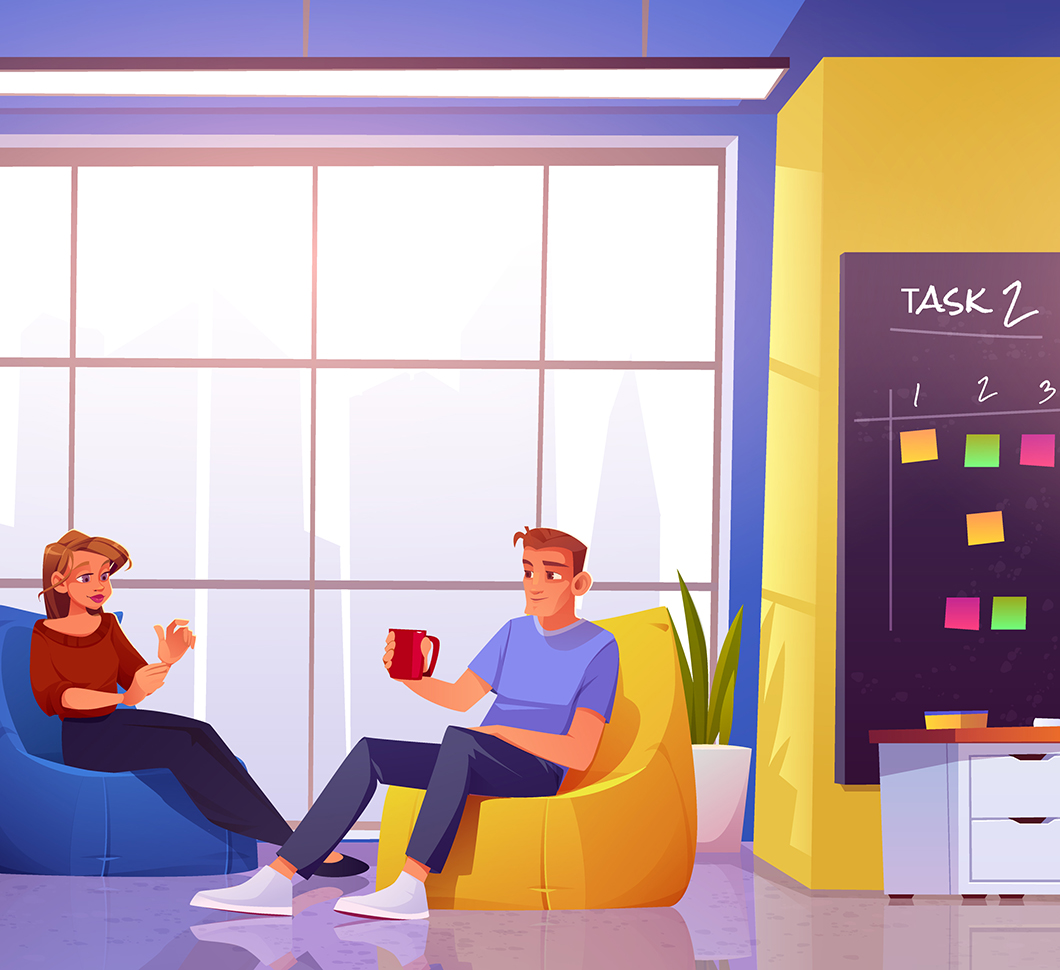 Key Trends Shaping Gamification in Recruitment for 2026 and Beyond
Key Trends Shaping Gamification in Recruitment for 2026 and Beyond  How to Create Crypto Casino Games the Right Way
How to Create Crypto Casino Games the Right Way  AI Recruitment Games: From Real-Time Assessments to Better Hiring Outcomes
AI Recruitment Games: From Real-Time Assessments to Better Hiring Outcomes  Games for Business: Proven Strategies for Engagement and Growth
Games for Business: Proven Strategies for Engagement and Growth  How to Design Learning Games for Kids That Teach Real-World Skills
How to Design Learning Games for Kids That Teach Real-World Skills 















